1862: Kaitangata
January 4, 2021
By AHNZ
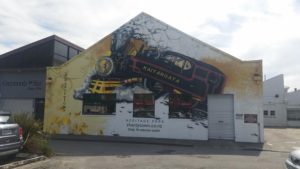 The town of Kaitangata, Otago, really got going in 1862 when mining began and the coal mine opened. In the same year came the church grounds (Presbyterian, of course.) You know it’s a town that’s making money if The State puts an outpost there to take their cut of the wealth and so it was that, also in 1862, came a police station and customs house.
The town of Kaitangata, Otago, really got going in 1862 when mining began and the coal mine opened. In the same year came the church grounds (Presbyterian, of course.) You know it’s a town that’s making money if The State puts an outpost there to take their cut of the wealth and so it was that, also in 1862, came a police station and customs house.
Transport was a problem for this rich coal ground. It was a long way to haul coal by horse¹ to the booming markets of Gold Rush Otago. So, a railway to the main line was built and opened in June 1876. The telegraph line opened shortly after.
A long time ago came a man on a track
Walking thirty miles with a sack on his back
And he put down his load where he thought it was the best
Made a home in the wilderness– Telegraph Road; Dire Straits
Gaining Steam
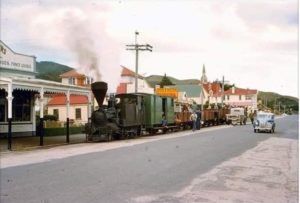 Kaitangata suffered a huge setback on 21 February 1879 when its mineshaft exploded, killing 34 miners. Most died peacefully, overcome by CO2 poisoning and passing out for a sleep they would never awaken from. As with Brunner’s disaster 20 years later, assistance and body recovery was immediate. Lessons were learned to the benefit of the New Zealand mining industry and ‘Kai’ grew and grew.
Kaitangata suffered a huge setback on 21 February 1879 when its mineshaft exploded, killing 34 miners. Most died peacefully, overcome by CO2 poisoning and passing out for a sleep they would never awaken from. As with Brunner’s disaster 20 years later, assistance and body recovery was immediate. Lessons were learned to the benefit of the New Zealand mining industry and ‘Kai’ grew and grew.
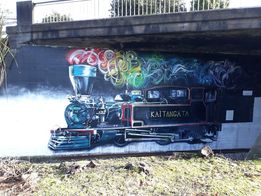 Kaitangata, or Katie, is an F-class steam train built in 1896 back in Scotland. For the first part of her life she pulled coal from Kaitangata’s mine.
Kaitangata, or Katie, is an F-class steam train built in 1896 back in Scotland. For the first part of her life she pulled coal from Kaitangata’s mine.
Greymouth’s Shantytown is now the proud owner, as of 1971. This is why there are two murals of the loco about the town and this is the second (image left.)
There was also a mighty ship by the same name, also built in Scotland. No murals for her but this ship was also specialised at hauling coal, ex-Greymouth. Good for timber too.
Decline
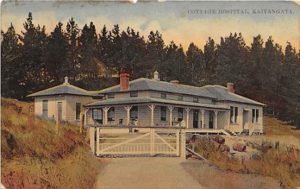 By the time my family with its two small boys lived at Kaitangata it had become a more civilised place. The community (not The State) build great infrastructure such as Kaitangata Cottage Hospital (image left.) My ancestor’s profession was as a high-end gardener so Kai had to be an up and coming place in the 1880s/90s to justify his appearance.
By the time my family with its two small boys lived at Kaitangata it had become a more civilised place. The community (not The State) build great infrastructure such as Kaitangata Cottage Hospital (image left.) My ancestor’s profession was as a high-end gardener so Kai had to be an up and coming place in the 1880s/90s to justify his appearance.
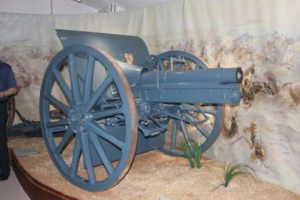 Kaitangata fought the Great Wrong War, sending a compliment of warriors it’s strange to think it couldn’t supply today. The State repaid towns like this with a grant for a war memorial. Some of the more thrifty and forward-looking towns didn’t spend their grant on a statue but on a War Memorial Hall. Better to have a community hall as an ongoing resource, Kaitangata’s elders decided. Unfortunately this building was given a death sentence in 2020 and is being torn down. Ref. Fears firebug at work after another blaze; ODT
Kaitangata fought the Great Wrong War, sending a compliment of warriors it’s strange to think it couldn’t supply today. The State repaid towns like this with a grant for a war memorial. Some of the more thrifty and forward-looking towns didn’t spend their grant on a statue but on a War Memorial Hall. Better to have a community hall as an ongoing resource, Kaitangata’s elders decided. Unfortunately this building was given a death sentence in 2020 and is being torn down. Ref. Fears firebug at work after another blaze; ODT
“…it was presented to Kaitangata in 1921. It sat rusting in a playground until the 1960s, its wooden wheels rotting, when a concerned resident took possession…Aaron Fox discovered it sitting in a South Otago paddock…his family bought it and moved it to Invercargill, where Mr Fox slowly pieced together its part in the glorious charge at Huj. In 1997, the Fox family donated it to the museum, which build a new room for it.”- Kevin Norquay, NZPA (2001)
Kaitangata Takeaway Food
‘Kai’ is the Maori word for food, ‘tangata’ for people. So I guess the kai tangata whenua of the past were remarkably delicious to the tangata invaders of the old times. Perhaps a previous population, Moriori or Waitaha or Ngati Mamoe, were given this as a curse name by the tribe that predated upon them. Old Time Maoris enjoyed these sorts of macabre mind games, the Ngati Toa branding their enemies at Kaiapoi as ‘Kaiapohia’ meaning to them ‘piling up bodies to eat’.
In their boom years the people of Kaitangata would have been good to eat because they were covered in coal dust. Apparently this adds very nice texture to food but contributes no flavour.
—
1 Or, against the current up the Clutha River?
Ref. Death at Kaitangata, New Zealand’s Heritage (1971)
Ref. Kaitangata, New Zealand; Wiki
Ref. Battle looms over demolition of Kaitangata memorial hall; ODT (2020)
Ref. Kevin Norquay, NZPA (2001); The Unauthorised History of Kaitangata and South Otago, Facebook
Image ref. Kaitangata mural, Greymouth; AHNZ Archives (2020)
Image ref. Kaitangata railway underpass mural; Helen Cain photo; The Unauthorised History of Kaitangata and South Otago, Facebook
Image ref. Katie in Kaitangata, c.1960s; The Unauthorised History of Kaitangata and South Otago, Facebook
Image ref. Cottage Hospital Kaitangata South Otago New Zealand 1910c postcard; New Zealand Vintage Postcards, Facebook
Image ref. Krupp; watercarrier, landships.activeboard.com
 Like Comment Share
Like Comment Share





